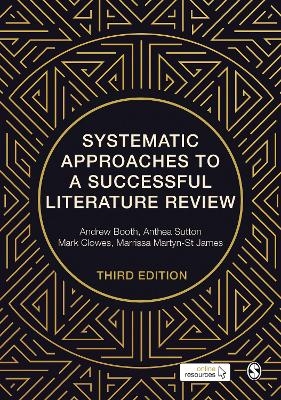
Systematic Approaches to a Successful Literature Review
SAGE Publications Ltd (Verlag)
978-1-5297-1185-1 (ISBN)
Whether you are new to literature reviews or working with new types of data, this book takes the guesswork out of writing your literature review. From deciding how much literature to include to managing your data, assessing your sources, and writing results, it outlines a step-by-step process that works with any data.
To help you choose best approach for your research, this book includes:
· Worksheets and decision aids to help you plan and organise your literature review
· Worked examples and case studies to show you what – and what not – to do in practice
· Troubleshooting tips and answers to all your frequently asked questions
· Online access to a literature review starter template, an exercise workbook, project diary template, and a source credibility checklist.
The perfect project support for any social sciences student, this edition also includes a new chapter on analysing mixed methods research.
Andrew Booth is Reader in Evidence-Based Information Practice at the School of Health and Related Research (ScHARR), The University of Sheffield. Anthea Sutton is a Senior Information Specialist at the School of Health and Related Research (ScHARR), The University of Sheffield.
Chapter 1: Meeting the Review Family: An Overview
What is a Literature Review?
When do I do a literature review?
Meet the review family
Why not a literature review?
What is not a literature review?
How do I prepare to do a literature review?
Chapter 2: Getting Started on your Literature Review
Why is the literature review so important?
Where do I start?
Why review the literature?
A brief history of research synthesis
What is the place of theory in literature review?
Introducing the SALSA framework
Systematic approaches
How do I plan and conduct my literature review?
Managing your literature review
Updates to existing reviews
Converting your review to a different format
Chapter 3: Choosing your review methods
Our “Survival Kit” of review options
Review Choice Scenarios
Chapter 4: Defining your scope
Introduction: Why is defining your scope important?
Further defining your scope
Toolbox - Defining your Scope
Defining your scope: challenges and pitfalls
The review protocol
Chapter 5: Searching the literature
Who should conduct the literature search?
Aims and purpose of literature searching
How to prepare for your review (the scoping search)
How to construct your search strategy
How to search bibliographic databases
How to use supplementary searching
How to manage your references
How to report the search process
Chapter 6: Assessing the evidence base
Assessing your included studies – first steps
Assessing the evidence-base in detail
Chapter 7: Synthesising and analysing quantitative studies
Synthesis-analysis, analysis-synthesis?
Revisiting the review question(s)
Chapter 8: Synthesising and analysing qualitative studies
Overview of approaches to qualitative synthesis
A step-by-step guide to qualitative synthesis
Getting started in qualitative synthesis
Progressing to advanced forms of synthesis
Chapter 9: Synthesising and analysing mixed methods data
Undertaking a Mixed Methods Review
A step-by-step guide to mixed methods synthesis
Points of integration for quantitative and qualitative evidence
On the role of the Narrative Review
Chapter 10: Writing up, presenting and disseminating your review
Considering your audience
A sample review structure
Publicising your review
Toolbox for presenting your findings
| Erscheinungsdatum | 26.11.2021 |
|---|---|
| Verlagsort | London |
| Sprache | englisch |
| Maße | 170 x 242 mm |
| Gewicht | 850 g |
| Themenwelt | Medizin / Pharmazie |
| Sozialwissenschaften ► Pädagogik | |
| ISBN-10 | 1-5297-1185-1 / 1529711851 |
| ISBN-13 | 978-1-5297-1185-1 / 9781529711851 |
| Zustand | Neuware |
| Haben Sie eine Frage zum Produkt? |
aus dem Bereich


